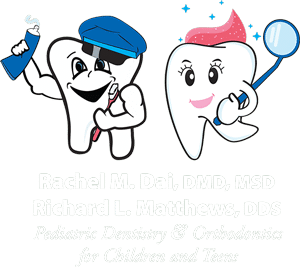Getting The Legacy Orthodontics To Work
Fascination About Legacy Orthodontics
Table of ContentsExamine This Report about Legacy OrthodonticsLittle Known Questions About Legacy Orthodontics.All about Legacy OrthodonticsThe Ultimate Guide To Legacy OrthodonticsSome Ideas on Legacy Orthodontics You Need To Know
In addition, we supply adjustable treatment timetables, versatile settlement options and a fun, satisfying experience.An orthodontist is a dental expert educated to detect, protect against, and treat teeth and jaw abnormalities. Orthodontists function with individuals of all ages, from kids to grownups.
Malocclusion, or misaligned teeth, can result in dental concerns, consisting of dental cavity, gum tissue condition, and tough or uncomfortable eating. But not every person is birthed with straight teeth. If you have a negative bite or big rooms in between your teeth, you may intend to get in touch with a dental practitioner specializing in orthodontic care.
The Best Guide To Legacy Orthodontics
( Picture Credit: DigitalVision/Getty Images) Orthodontists use fixed and removable dental gadgets, like braces, retainers, and bands, to transform the placement of teeth in your mouth. Orthodontic treatment is for oral irregularities, consisting of: Jagged teethBite issues, like an overbite or an underbiteCrowded teeth or teeth that are also much apartJaw misalignmentThe objective of orthodontic therapy is to enhance your bite.
A healthy and balanced bite ensures you can consume, chew, and talk effectively. While you might think of orthodontists as primarily for children or young adults that require braces, they can deal with oral issues at any type of age. Orthodontists attend university, oral institution, and orthodontic college. After college graduation, they invest 2 or 3 years in an orthodontic residency program.
All orthodontists are dental practitioners, however not all dental professionals are orthodontists. Orthodontic residency programs offer intensive, concentrated guideline for dental experts. They focus on 2 areas: Exactly how to effectively and securely relocate teeth Exactly how to correctly lead development in the teeth, jaw, and faceOnce an orthodontist has finished training, they have the option to end up being board accredited.
Rumored Buzz on Legacy Orthodontics
Imbalance, or malocclusion, is one of the most common factor individuals see an orthodontist. It is hereditary and is the outcome of dimension differences in between the top and reduced jaw or in between the jaw and teeth. Malocclusion brings about tooth overcrowding, a misshapen jaw, or irregular bite patterns. Malocclusion is normally treated with: Your orthodontist connects steel, ceramic, or plastic square bonds to your teeth.
Some individuals require a headwear to aid relocate teeth right into line with stress from outside the mouth. A retainer is a customized gadget that keeps your teeth in area.
They're frequently utilized on children. They can produce added room in the mouth without having to pull teeth. If you have a major underbite or overbite, you might require orthognathic surgery (additionally called orthodontic surgical procedure) to lengthen or reduce your jaw. Orthodontists use cables, surgical screws, or plates to support your jaw bone.
You might need to see an orthodontist if you have: Crowding or otherwise enough area for all of your teethOverbite, when your top teeth come your base teethUnderbite, when your bottom teeth are as well far forwardSpacing or concerns with gapsCrossbite, which is when your upper teeth fit behind your base teeth when your mouth is closedOpen bite or a vertical space in between your front bottom and upper teethMisplaced midline, when the center of your other bottom and top teeth don't align Dealing with an oral malocclusion can: Make biting, eating, and talking easierImprove the symmetry of our face and your general appearanceEase pain from temporomandibular joint conditionsDifferent your teeth and make them less complicated to clean up, assisting protect against dental caries or tooth cavities It's frequently a dentist that first notices misaligned teeth during a routine examination.
3 Simple Techniques For Legacy Orthodontics

Throughout your initial orthodontic assessment, you'll likely have: An oral examPhotos taken of your face and smileDental X-raysPanoramic (360 level) X-rays of your face and headImpressions to produce molds of your teethThese examinations will certainly assist your orthodontist know just how to wage your treatment. leesburg orthodontist. An orthodontist is a dental expert that's had training to treat your teeth and jaw
An orthodontist is focused on your bite, so something like a broken tooth would be taken care of by a dentist. Orthodontists are focused on your bite, or the way your teeth fit together, and the straightness of your teeth.
Ever wondered just how stars always appear to have flawlessly straightened teeth? Orthodontists are oral specialists that focus on fixing abnormalities in the teeth and jaws.
The Definitive Guide to Legacy Orthodontics

While braces are the most frequently identified orthodontic therapy, orthodontists have a diverse toolkit at their disposal. The certain method chosen depends on the severity of the case, the person's age, and individual preferences. These reliable braces utilize a system of brackets bonded to the teeth and attached by wires.
Clear aligners, like Invisalign, are a preferred option for individuals seeking a more very discreet therapy alternative. These detachable trays are personalized to progressively shift the teeth's placement. Headwear may be utilized together with dental braces or aligners to use extra targeted forces, specifically for dealing with jaw disparities. In instances of narrow jaws, palatal expanders can be used to develop area for correct tooth positioning.